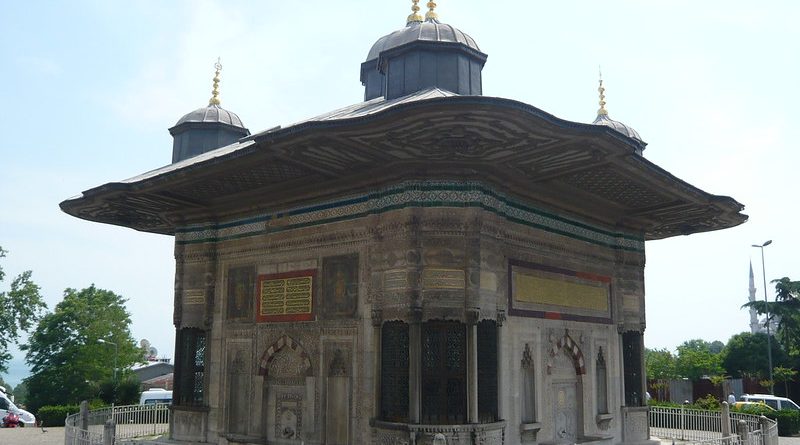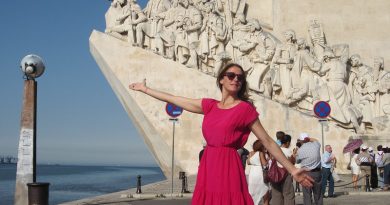Top Ten Sites in Istanbul
One of the most immense metropolises in human history, Istanbul remains as impressive a city as it was under its previous identities: Byzantium and Constantinople. Having risen to prominence as the epicentre of the Roman Empire – the Byzantium Empire and the Ottoman Empire – Istanbul benefitted from its pivotal position along the Silk Road, the network of routes which opened up trade between the East and the West. Today, as the capital of modern-day Turkey, Istanbul remains a gateway between Europe and Asia. One of the fastest growing global cities in the world, the city also has an extensive, multi-layered history which few cities can hold a candle to.
Sultan Ahmed Mosque (Blue Mosque)
Without a doubt the city’s most iconic landmark, the Sultan Ahmed Mosque (more commonly known as the Blue Mosque) is among the most illustrious and spectacular structures of its kind on the planet. Built in the early 17th Century between 1609 and 166 under the reign of Ahmed I, for whom the Mosque is named and whose remains lie within it. With five domes and six minarets, the Mosque is known best for its enormous scale and distinct blue exterior from which it earns its nickname. One of the most spectacular mosques in the world, this is one of the city’s most unmissable sights.
Topkapi Palace
Istanbul’s largest and most popular museum, the Topkapi Museum is steeped in the city’s Ottoman heritage. Built on the orders of Mehmet the Conqueror, who lead the conquest of Constantinople in the 15th Century, the palace quickly eclipsed the pre-existing Old Palace in Beyazit Square. The Palace gradually expanded over the centuries, peaking in the 17th Century after which Sultans spent less and less time there. The Palace returned to significance following the collapse of the Ottoman Empire in 1923 when, upon orders from the government, the Palace was reestablished as a museum. Only a handful of its hundreds of rooms are open to the public, but there are a plethora of treasures held within such as the Spoonmaker’s Diamond. The Palace offers visitors a glimpse of the opulent lives of the Sultans, which used to live there, which in addition to its many treasures, make it one of the city’s top destinations.
Hagia Sophia
Sometimes overshadowed by the nearby Blue Mosque, the Hagia Sophia, better than any other building, reflects the ever-shifting identity of the city of Istanbul. Initially built over a thousand years ago in the early 6th Century, the building was an Eastern Orthodox Church in its first incarnation. Despite briefly functioning as a Roman Catholic Church during the 13th Century, the building remained under Orthodox control until 1453, when it was converted into an Imperial Mosque following the conquest of the city by Ottoman leader Mehmet the Conqueror. Shortly after the collapse of the Ottoman Empire, the building was secularised and converted into a museum, its present function. The Hagia Museum is the second-most popular museum in the city after the Topkapi Palace. Its grandiose structure, immensely-detailed interior and its multi-faceted history make it one of the most important sites in the entire city.
Archaeological Museum
The main museum of the Istanbul Archaeology Museums, the Archaeological Museum was established in the wake of a modernisation drive within the Ottoman Empire at the turn of the 20th Century. The museum contains a plethora of artefacts from throughout the history of the region’s history, stretching back through Ottoman, Byzantine, Roman and even Hellenistic periods. The museum’s most notable item is the Alexander Sarcophagus, excavated from Lebanon dating back to the end of the 4th Century. The Sarcophagus is named for its detailed carvings, which depict the exploits of the military leader. This, among several other artefacts make the Archaeological Museum one of the most interesting sites within Istanbul.
Museum of Turkish and Islamic Arts
Housed in an impressive 16th Century building, which served as a palace for Pargali Ibrahim Pasha, an important historical figure, who served under Suleiman the Magnificent. The extensive permanent collection housed within the museum draws from a wide range of periods and areas from within Turkey, specialising in rugs, textiles and calligraphy. In addition, the museum recounts the history of the country’s many cultures from the various periods of the country’s long, complex history. Often overlooked in favour of the more well-known museums, the Turkish and Islamic Arts Museum is one of the more informative institutions of its kind, especially about the country’s cultural history.
Grand Bazaar
Considered by some to be the world’s most-visited tourist attractions, Istanbul’s Grand Bazaar draws nearly 100 million visitors per year. A covered market, the Grand Bazaar is one of the largest and oldest of its kind in the world. Set within Istanbul’s Walled City, the Grand Bazaar was first developed in the mid-15th Century shortly after the Ottoman Conquest of the city. It gradually expanded over the centuries, reaching over an estimated 4,000 stores within its confines at the turn of the twentieth century. The Bazaar has survived a number of disasters during its lifetime, including natural disasters such as earthquakes. A progenitor of the modern-day shopping mall, the Grand Bazaar is one of the most lively, bustling hubs of the immense city and an unmissable destination for visitors.
Basilica Cistern
One of the city’s more well-known sites, the Basilica Cistern is a subterranean sight to behold. Perhaps the most enduring and iconic relic of the city’s Byzantine period, the Basilica Cistern was built in the 6th Century under the rule of Emperor Justinian I and functioned as a filtration system for the city’s palaces, a role it continues to provide for the city today. The largest of hundreds of underground cisterns dotted throughout the city, the Basilica Cistern features a number of intricately-designed pillars, the most notable of which are based upon the Greek mythological monster Medusa. One of the city’s most long-lasting remains, the Basilica Cistern reflects the ingenuity of the Byzantine Empire.
Chora Church
Perhaps the city’s most iconic Medieval landmark, the Chora Church is a historic museum located within a former Greek Orthodox Church. Initially built at the beginning of the 4th Century, the church was consistently renovated thereafter. Much like the Hagia Sophia, the Church was converted into a Mosque following the Ottoman Conquest of the city in the mid-15th Century. Much of its original Byzantine designs were destroyed by a combination of Ottoman renovation and natural disasters. American philanthropic efforts saw a restoration project resuscitate the church from its neglect during the mid-twentieth century. Since 1958, it has functioned as a public museum. Best known for its unusually well-preserved exterior, the Chora Church is one of the most important sites of Byzantine Istanbul.
Museum of Innocence
One of the newer tourist sites within the city, the Museum of Innocence was established by acclaimed Turkish novelist Orhan Pamuk in conjunction with his most famous novel of the same name. Opened to the public in 2012, the museum is unique in that it presents a detailed examination of the life of the city’s upper-class during the late 20th Century. Consisting mainly of everyday objects from the period, the museum is known for its meticulous authentic recreation of the period. A stark contrast from the city’s other museums, which specialise in the city’s more distant past, the Museum of Innocence is thoroughly unique and worth a visit for those looking for something different.
Istanbul Modern
The city’s main centre for contemporary art, the Istanbul Modern opened in 2004 and specialises primarily in Turkish artists although it has featured foreign exhibitions and has a number of pieces by foreign artists within its permanent collection. Located along the picturesque Bosphorous, the Istanbul Modern is one of the city’s most important cultural institutions.
Destination – Turkey




